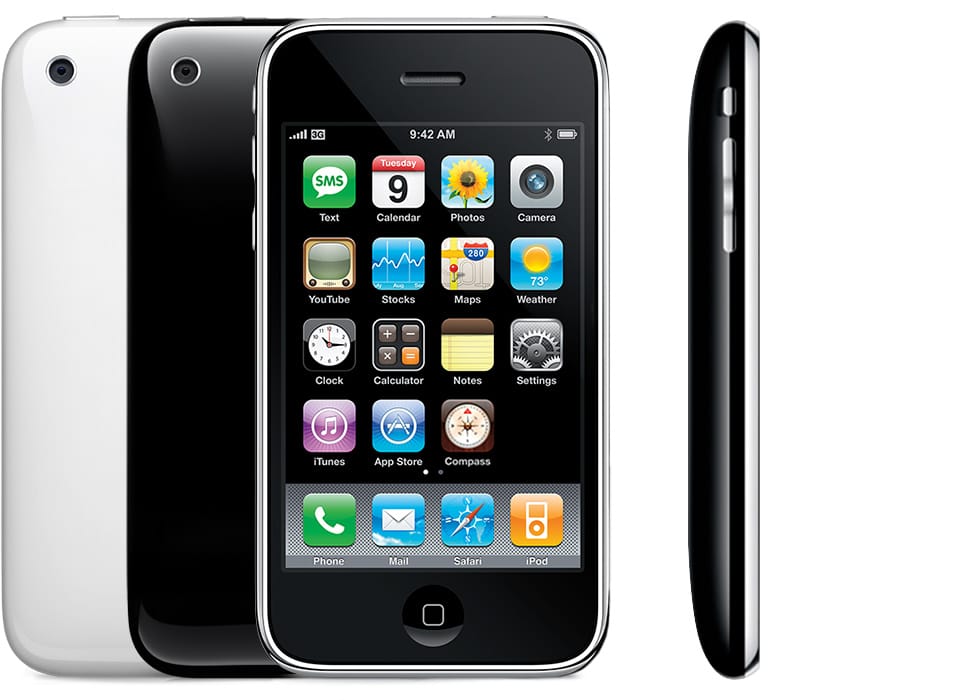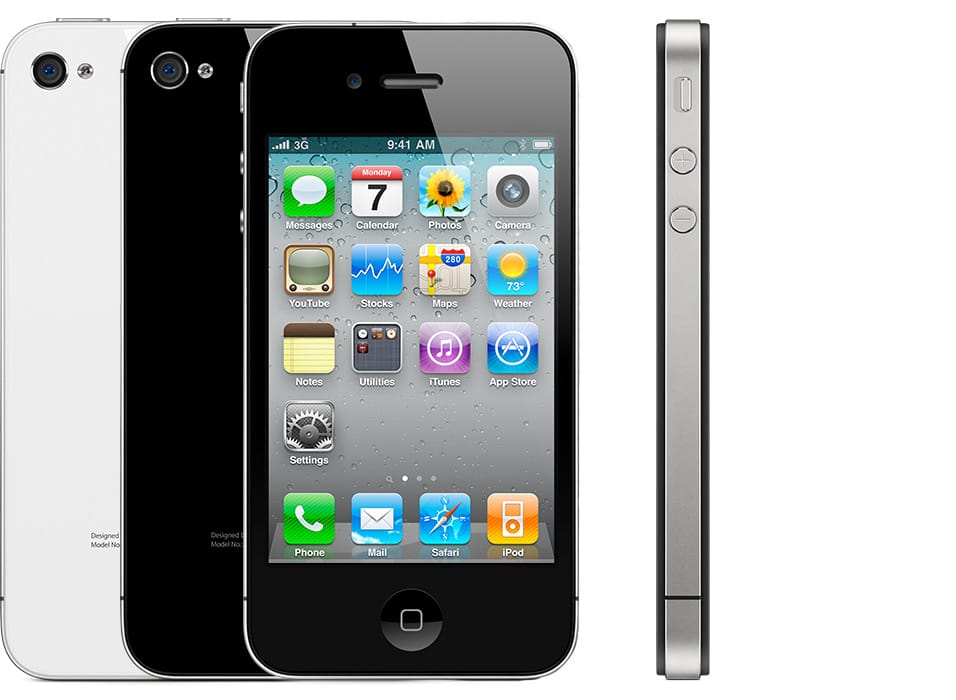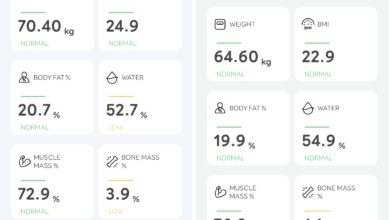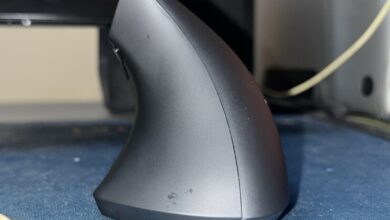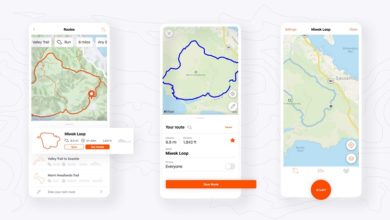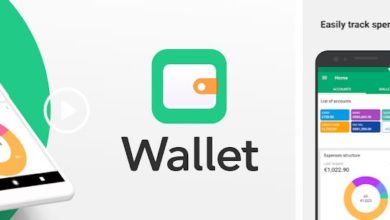Apple iPhone : one that killed Nokia

Before iPhone came, Nokia and Blackberry used to rule the smartphone industry. While feature phones had really interesting designs, smartphones were hideous and ugly. Smartphones in the 2000s used to look like bricks with physical qwerty keyboard and ugly user interfaces. When Steve Jobs announced the first iPhone with a capacitive touch display and without a qwerty keyboard, the world of smartphones took a massive turn. The year 2007 changed the way humans used cell phones. It is hard to believe now if someone says that they don’t use a smartphone. Let us take a look at the lineup that changed the industry forever.
1st generation iPhone
January 9, 2007. The day that the cornerstone was laid to change the way humans communicate in the 21st century. This was the day that Apple re-invented the cell phone. What happened on that was the biggest change in cell phone design since the cell phone was invented. The first iPhone came with aluminium unibody back, a 3.5″ capacitive touch screen and the iconic home button. The design of the first iPhone was unlike anything that the world saw. Even to this day, this is the design language followed by the industry. Front dominated by a display, buttons on the side and clean rear profile.

Released on June 29, 2007, in the USA, the first generation iPhone turned out to be a massive hit and even to this day, pulls more than 90% of profits generated by smartphone industry. By end of the year, the iPhone was made available in the United Kingdom, France, Germany, Portugal, the Republic of Ireland and Austria. While iOS 1.0 was the OS that came with the phone, Apple managed to provide updates till iOS 3.1.3 that was released in 2010. One of the biggest strengths of first iPhone were resource utilization, timely software updates, industrial build quality and these continue to be the strengths of iPhones. Apple managed to sell more than 6 million units of 1st generation iPhone.
Key Features
- CPU: Single core 412MHz Samsung custom-made chip (based on ARM architecture)
- GPU: PowerVR MBX Lite 3D
- RAM: 128MB
- Storage : 4GB or 8GB or 16GB flash memory
- Battery: 1400mAh Lithium Ion battery
- Display : 3.5″ 320×480 pixel resolution multitouch display
- Camera: 2mp rear camera; no front camera
- iPod dock connector for data transfer and charging
- Bluetooth v2.0
- Wi-Fi : 802.11 a/b/g
iPhone 3G

The first iPhone lacked many features, yet it sold like hotcakes. Apple released iPhone 3G after a year, on July 11, 2008. Unlike the first iPhone, the iPhone came with polycarbonate body but the buttons were made of metal. Buyers were offered to choose either black or white colour. Most of the design was similar to first gen iPhone. Majority of differences were outside. While iPhone 3G came with iOS 2.0, Apple provided software updates to iPhone 3G till iOS 4.2.1.
Key Features
- CPU: Samsung 412MHz single core
- GPU: PowerVR MBX Lite
- RAM: 128MB
- Storage : 8 GB or 16GB
- Battery: 1150mAh
- Display : 320 x 480 pixel resolution 3.5″ capacitive touch
- Camera: 2mp rear camera; no front-facing camera
- Bluetooth: 2.0
- Wi-FI : 802.11 b/g
iPhone 3GS
The third iteration was entirely about faster performance. The iPhone 3GS, released in July 2009 performed most tasks twice as fast as iPhone 3G. The iPhone 3GS came with iOS 3.0 and Apple released updates till iOS 6.1.6 for iPhone 3GS. The iPhone 3GS was the first iPhone that came with the system-on-chip chipset (CPU/GPU and other components part of a single chip). Apple continues to ignore requests to include a front-facing camera. Still, the iPhone 3GS sold extremely well. One of the reasons is that those who got the first iPhone were up for an upgrade (end of 2-year contract).
Key Features
- CPU: Samsung 600MHz single core (ARM Cortex A8 based)
- GPU : PowerVR SGX535
- RAM : 256MB
- Storage : 8GB or 16GB or 32GB
- Display : 320 x 480 pixel resolution 3.5″ touch screen
- Battery : 1220 mAh
- Camera : 3mp rear camera ; no front facing camera
- Bluetooth : 2.1
- Wi-Fi : 802.11 b/g
iPhone 4
Released in June 2010, the iPhone 4 is still considered as one of the best designs in the history of cell phones. The iPhone 4 started the PPI war, with Retina Display. This was the beginning of the race to cram more and more pixels into the display (we started seeing 2K and 4K resolution smartphone displays). Apple ditched Samsung as the chipmaker and started using the in-house designed chipset. The iPhone 4 is the beginning of Apple’s A series of chips (A4 on iPhone 4). Apple iPhone 4 is also the first iPhone to have a front-facing camera. The biggest change though is the design. The industrial glass and metal body of iPhone 4 looked absolutely stunning. There was one major issue that plagued the iPhone 4. This was the first phone to use the phone’s metal rim as antennae and when one held the phone in a specific way, the antenna would short and the phone would lose signal reception. Apple finally acknowledged the issue and started providing free bumper cases. The Apple iPhone 4 first came with iOS 4 and received updates till iOS 7.1.2. This is also the first iPhone to support CDMA networks.
Key Features
- Build: Premium glass and metal build
- CPU: Apple A4, 800MHz single-core CPU (ARM Cortex A8)
- GPU: PowerVR SGX535
- RAM: 512MB
- Storage : 8GB or 16GB or 32GB flash
- Display : 640 x 960 pixel resolution 3.5″ display.
- Camera: 5mp rear camera; VGA front-facing camera
- Battery: 1420 mAh Lithium Ion
- Bluetooth: 2.1
- Wi-Fi : 802.11 b/g/n
iPhone 4S

Released in October 2011, the iPhone 4S sold in massive numbers and crossed 60 million units in sales. One of the main reasons is available in some countries till 2016 as low-cost iPhone. The iPhone 4S, as the marker says (S), is meant to offer better performance over 4. This is the first phone that came with a dual-core CPU and a much faster GPU. As a result, the iPhone 4S was up to 7 times faster than the iPhone 4 in gaming. The antennae were redesigned to fix issues that were reported with iPhone 4. The iPhone 4S is the first iPhone that came with Siri personal voice assistant (thanks to iOS 5.0). The iPhone 4S received software updates till iOS 9.3.5.
Key Features
- Build: Premium glass and metal build
- CPU: Apple A5, 800MHz dual-core CPU (ARM Cortex A9)
- GPU: PowerVR SGX543MP2
- RAM: 512MB DDR2
- Storage : 8GB or 16GB or 32GB or 64GB flash
- Display : 640 x 960 pixel resolution 3.5″ display.
- Camera: 8mp rear camera; VGA front-facing camera
- Battery: 1430 mAh Lithium Ion
- Bluetooth: 4
- Wi-Fi : 802.11 b/g/n
iPhone 5

This was the time when the competition not only caught up with Apple’s iPhone but moved far ahead. While Android phones started to get large screen displays with FullHD resolution, Apple’s iPhone was still stuck in 3.5″ form factor. With iPhone 5, Apple slightly increased the display size in a way that it does not hinder one hand use. Also gone is the glass back, replaced by industrial grade aluminium. Released in September 2012, the new design iPhone turned out to be a massive hit as two million units were sold on the first day itself and five million units were sold inside three days. At launch, the iPhone 5 came with iOS 6 and got OS updates till iOS 10.3.3. With iPhone 5, Apple finally moved to 1GB of RAM and also ditched 8GB storage variant. Even to this day, the design of iPhone 5 is considered as among the best and it truly turned out to be a timeless design.
Key Features
- Build: Premium aluminium unibody
- CPU: Apple A6, 1.3GHz dual-core CPU (ARM v7-A)
- GPU: PowerVR SGX543MP3
- RAM: 1GB DDR2
- Storage : 16GB or 32GB or 64GB flash
- Display : 640 x 1136 pixel resolution 4″ display.
- Camera: 8mp rear camera; 1.2mp front facing camera
- Battery: 1440 mAh Lithium Ion
- Bluetooth: 4
- Wi-Fi : 802.11 b/g/n
iPhone 5S

One feature that Apple introduced with iPhone 5S turned out to be the primary security feature in the majority of phones today. TouchID fingerprint reader. Apple introduced fingerprint reader in this variant and it turned out to be a massive hit. No need to enter complex password or PIN to unlock the phone. One touch and the phone would unlock. There are billions of phones out there now that rely on fingerprint sensor to unlock the phone. Released in September 2013, iPhone 5S ran iOS 7 at launch and was updated till iOS 10.3.3.
Key Features
- Build: Premium aluminium unibody
- CPU: Apple A7 with M7 motion coprocessor, 1.3GHz dual-core CPU
- GPU: PowerVR G6430
- RAM: 1GB DDR3
- Storage : 16GB or 32GB or 64GB flash
- Display : 640 x 1136 pixel resolution 4″ display.
- Camera: 8mp rear camera; 1.2mp front facing camera
- Battery: 1560 mAh Lithium Ion
- Bluetooth: 4
- Wi-Fi : 802.11 b/g/n
iPhone 5C

The iPhone 5C is the result of Apple’s decision to make a low-cost iPhone available for the masses. Released in September 2013 alongside the iPhone 5S, the 5C did not come with a TouchID fingerprint reader and also had older Apple A6 CPU and GPU. Other components largely remained the same. The build though was made of polycarbonate instead of metal. Though the iPhone 5C was available in various colours, Apple could not generate the level of interest that iPod Nano created. As a result, Apple had to go back to drawing board to create low-cost iPhone strategy. Apple iPhone 5C ran iOS 7 at launch and was updated till iOS 10.3.3.
Key Features
- Build: polycarbonate body
- CPU: Apple A6, 1.3GHz dual-core CPU (ARM v7-A)
- GPU: PowerVR SGX543MP3
- RAM: 1GB DDR2
- Storage : 8GB or 16GB or 32GB flash
- Display : 640 x 1136 pixel resolution 4″ display.
- Camera: 8mp rear camera; 1.2mp front facing camera
- Battery: 1510 mAh Lithium Ion
- Bluetooth: 4
- Wi-Fi : 802.11 b/g/n
iPhone 6

Finally, Apple gave what every iPhone user was urging for many years. Big screen iPhone. Gone are those tiny 4″ displays. The iPhone 6 came with 4.7″ display and 6 plus came with 5.5″ display. Released in September 2014, Apple sold more than 10 million iPhone 6/+ models in just three days and sold more than 200 million iPhone 6 units till date. At launch, iPhone 6 came with iOS 8.0 and is upgraded this year to iOS 11. Powered by Apple A8 chip with M8 motion coprocessor, the iPhone 6 was brilliant, fast and the display oozed quality. The only issue with the phone was that the phone will bend slightly if placed in skin-tight jeans. This was mainly due to the grade of aluminium used for the body. Apple rectified the issue in iPhone 6s. This did not affect the sales at all.
- Build : aluminum uni body
- CPU: Apple A8, 1.4GHz dualcore CPU (ARM v8-A)
- GPU: PowerVR 6 GX6450
- RAM : 1GB DDR3
- Storage : 16/32/64/128GB flash
- Display : 750 x 1334 pixel resolution 4.7″ display for 6 . 1080 x 1920 pixel resolution 5.5″ display for 6 plus.
- Camera : 8mp rear camera ; 1.2mp front facing camera
- Battery: 1810 mAh Lithium Ion for iPhone 6 ; 2915mAh for iPHone 6 Plus
- Bluetooth : 4
- Wi-Fi : 802.11 b/g/n/ac
iPhone 6S/6S+

Released in September 2015, the iPhone 6s and 6s Plus were more of iterative upgrades for the hugely popular 6/6+/ The notable change is the pressure sensitive 3D Touch display. Powered by Apple A9 chip, the 6s and 6s plus came with iOS 9 and will continue to get updates at least until next year.
- Build : aluminum uni body
- CPU: Apple A9, 1.4GHz dualcore CPU (ARM v8-A)
- GPU: PowerVR GT7600
- RAM : 2GB DDR4
- Storage : 16/32/64/128GB flash
- Display : 750 x 1334 pixel resolution 4.7″ display for 6 . 1080 x 1920 pixel resolution 5.5″ display for 6 plus.
- Camera : 12mp rear camera ; 1.2mp front facing camera
- Battery: 1715 mAh Lithium Ion for iPhone 6 ; 2750mAh for iPHone 6 Plus
- Bluetooth : 4
- Wi-Fi : 802.11 b/g/n/ac
iPhone SE

Made purely for those who prefer a small phone that fits snugly in hands, the iPhone SE is essentially an iPhone 6S in iPhone 5S body. Released in March 2016, the iPhone SE came with iOS 9.3 at launch and will continue to get updates for another year at least. The iPhone SE turned out to be a surprise hit and showed that there are still millions of users out there who prefer a small yet fully functional smartphone.
- Build: aluminium unibody
- CPU: Apple A9, 1.4GHz dual-core CPU (ARM v8-A)
- GPU: PowerVR GT7600
- RAM: 2GB DDR4
- Storage: 16/32/64/128GB flash
- Display : 640 x 1136 pixel resolution 4″ display.
- Camera : 12mp rear camera ; 1.2mp front facing camera
- Battery: 1624 mAh Lithium Ion
- Bluetooth : 4
- Wi-Fi : 802.11 b/g/n/ac
iPhone 7/7+

Though the iPhone 7 continued to have design language of iPhone 6, there were a lot of changes. Apple went ahead and removed 3.5mm headphone jack and started bundling LIghtning connector earphones. The plus model got huge camera upgrade, thanks to dual camera modules. Released in September 2016, the iPhone 7 and 7 Plus came with iOS 10 onboard. These are also the first iPhones with IP67 rated water resistance.
- Build : aluminum uni body
- CPU: Apple A10 Fusion , 2.34GHz dualcore CPU (ARM v8-A)
- GPU: PowerVR GT7600 Plus
- RAM : 2GB DDR4 for 7 ; 3GB DDR4 for 7 Plus
- Storage : 32/128/256GB flash
- Display : 750 x 1334 pixel resolution 4.7″ display for 7 . 1080 x 1920 pixel resolution 5.5″ display for 7 plus.
- Camera: 12mp rear camera for 7; 1.2mp front facing camera; Dual 12mp rear cameras for 7 Plus.
- Battery: 1960 mAh Lithium Ion for iPhone 7 ; 2900mAh for iPHone 6 Plus
- Bluetooth : 5
- Wi-Fi : 802.11 b/g/n/ac
- IP67 rated water resistance
iPhone 8/8+

The iPhone 8 continued to have iPhone 6 design language. The display size remained same, Apple upgraded panel to TrueTone technology. The new A11 Bionic chip is fastest ever that Apple created and has full support for Augmented Reality. Also, this is the first iPhone that came with Apple’s own GPU, showing Imagination Tech the door. Released in September 2017, the iPhone 8 was met with a mediocre response from buyers as more are interested in the iPhone X.
- Build: premium glass and metal body.
- CPU: Apple A11 Bionic, 2.34GHz six-core CPU (ARM v8-A)
- GPU: Apple designed custom GPU
- RAM: 2GB DDR4 for 8; 3GB DDR4 for 8 Plus
- Storage: 64/256GB flash
- Display : 750 x 1334 pixel resolution 4.7″ display for 8 . 1080 x 1920 pixel resolution 5.5″ display for 8 plus.
- Camera: a 12mp rear camera for 8; 7mp front facing camera; Dual 12mp rear cameras for 8 Plus.
- Battery: 1821 mAh Lithium Ion for iPhone 8 ; 2675mAh for iPhone 8 Plus
- Bluetooth : 5
- Wi-Fi : 802.11 b/g/n/ac
- IP67 rated water resistance
iPhone X
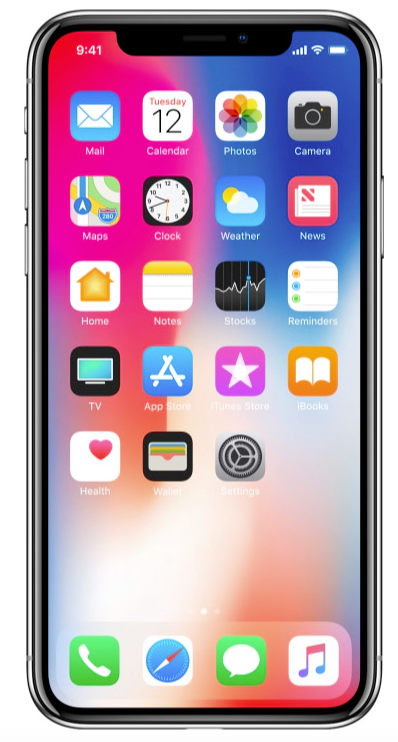
In 2017, most big brands started releasing phones with narrow to no bezels and those phones looked stunning. One major advantage is that one could fit 5.1″+ display in a phone that had a 4.7″ display. The iPhone X is the first model from Apple that came with such edge to edge display and it looked breathtaking. Apple moved from IPS panel to OLED panel and this made the display look even better. This is also the first phone to ditch front facing home button. Apple also ditched fingerprint reader with facial recognition technology that is foolproof. Along with the iPhone 8, the iPhone X supports wireless charging. Apple ditched metal unibody for a glass back to support wireless charging. In 2018, we should see Apple slowly phasing out the big bezel designs for edge to edge display to retire the tried and tested iPhone 6/7/8 design.
- Build: premium glass and metal body.
- CPU: Apple A11 Bionic, 2.34GHz six-core CPU (ARM v8-A), with neural engine
- GPU: Apple designed custom GPU
- RAM: 3GB DDR4
- Storage: 64/256GB flash
- Display: 5.8″ 2436×1125 pixel resolution edge to edge OLED
- Camera: 7mp front facing camera; Dual 12mp rear cameras.
- Battery: 2716 mAh
- Bluetooth : 5
- Wi-Fi : 802.11 b/g/n/ac
- IP67 rated water resistance

